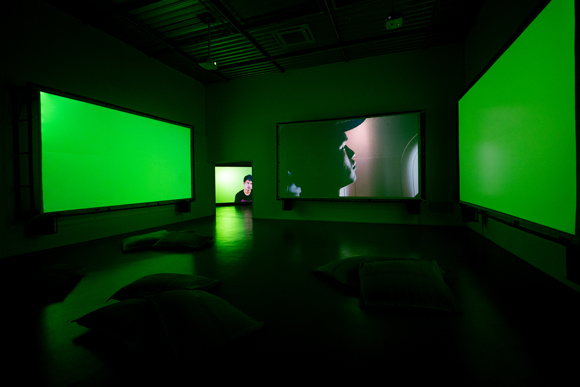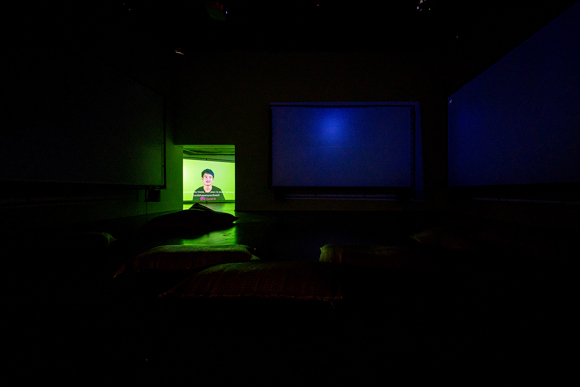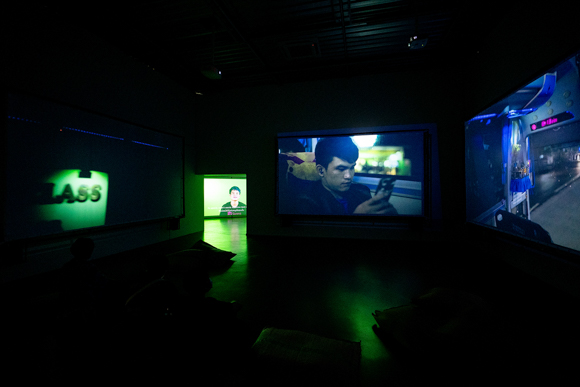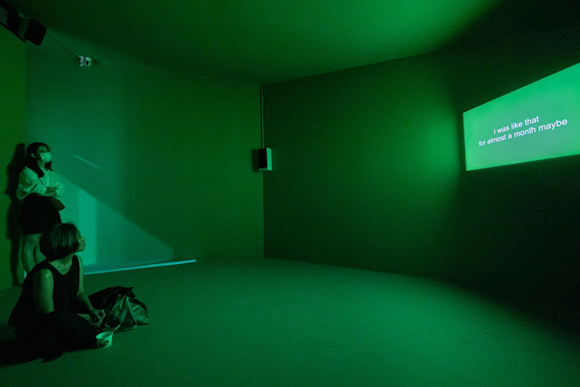
The Longest Way Round is the Shortest Way Home
Thai film director Nontawat Numbenchapol’s debut exhibition at Gallery VER, and his first-ever large-scale installation in an on-site gallery.
Echoing the idiom that suggests shortcuts are not, always, the best way, 'The Longest Way Round is the Shortest Way Home' reflects on the complexities of the migratory life and on its precariousness, often endeavored without legal documents. Contrary to what may have initially appeared as a shortcut to a better life, the act of crossing the border, specifically from Myanmar to Thailand in 'The Longest Way Round is the Shortest Way Home', manifests as an unsustainable choice. Systematically marginalized, immigrants often have no other options than limited freedom, or to return to the homeland.
Focusing on Shan laborers in Chiang Mai, the ethnographical framework of 'The Longest Way Round is the Shortest Way Home' incorporates Numbenchapol’s observations and on-site research by way of unique footage shot in the inlands of Myanmar to trace the journey of a young man as he returns, after six years, to his village in the Shan State to visit his family and to process his much-needed national identity documents.
Filmed alone without accompanying crew, Numbenchapol’s footage serves as a collection of visual field notes that reveal the protagonist’s views on his migratory life, the pain of leaving behind his homeland, and his expectations while embracing a new life across the border. At the same time, the footage fuels larger questions of belonging and unbelonging to one’s own homeland and on the meaning of identity, social or otherwise, in the making of an individual.
Encompassing immersive video and sound installations, as well as photography and mixed-media works, 'The Longest Way Round is the Shortest Way Home' aims to facilitate dialogues on contentions of inclusion, exclusion and societal acceptance across Southeast Asian borders, while also establishing the foundation for Numbenchapol’s ground research on Shan laborers in Chiang Mai for a feature-length film on the same topic.
About Curator
Loredana Pazzini-Paracciani is an independent curator, writer and lecturer of Southeast Asian contemporary art. Her research and curatorial practice revolve around critical sociopolitical issues in Southeast Asia, advocating a counter-hegemonic and non-Western-centric discourse. She curated Diaspora: Exit, Exile, Exodus of Southeast Asia (2019) at MAIIAM Contemporary Art Museum and Architectural Landscapes: SEA in the Forefront (2015) at Queens Museum, along with several exhibitions for commercial galleries in the US, UK and Southeast Asia. She has published in Frames Cinema Journal, University of St Andrews, UK; Convocarte: Revista de Ciências da Arte, Lisbon University, Portugal; and M.A.tter Unbound, LASALLE College of the Arts, Singapore, among others. She is a member of the Association for Southeast Asian Studies in UK, and Research Network for Transcultural Practices in the Arts and Humanities, Berlin University. Together with Patrick D. Flores, Loredana co-edited the anthology Interlaced Journeys: Diaspora and the Contemporary in Southeast Asian Art, published in 2020 by Osage Art Foundation, Hong Kong.
About Gallery VER
Gallery VER was established in 2006 as an artist-led initiative, with the intention to bring forth a collective stream of ideas and dynamism in how contemporary art and culture are defined and viewed. Through exhibitions, projects, one-off activities, events, and institutional exchanges, it seeks to initiate strands of programming under the best possible processes. The gallery space provides and supports a discursive platform that invests in both artists and curators to realize innovative exhibits and projects relevant to artistic and conceptual practices. The initiative aims to forge close ties with artists through professional representation, as well as mutual relationships between the artists and institutions it represents. Gallery VER strives to market and promote the works and practices of its artists on the basis of various agendas and disciplines interconnected in their work. More significantly, the gallery has a continuing commitment as an active agent to complement the formations of conceptualism in contemporary art as a legitimate and vital art form. Whether it’s singling out new relationships between art and the public, or developing strategies based on contemporary art production and dissemination, there is a willingness to explore uncharted territories when selecting artists, themes, and frameworks for its works.
Relocating area in 2016
For the inaugural opening of Gallery VER, this marking an important transition within the Contemporary Art landscape in Thailand. Gallery VER will open and built premises in the new gallery and studio precinct on Soi Narathiwat 22, Narathiwat Rd., This arts precinct displays a unique vision of shared and communal driven spaces in order to push forward more experimental and conceptual projects in Thailand. This new contemporary art space is an addition to the cultural map of Bangkok, with the official unveiling of the new VER Gallery spaces together with partners and friends.



